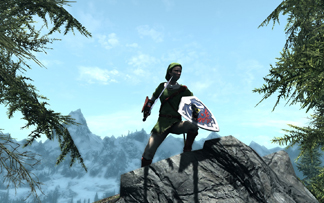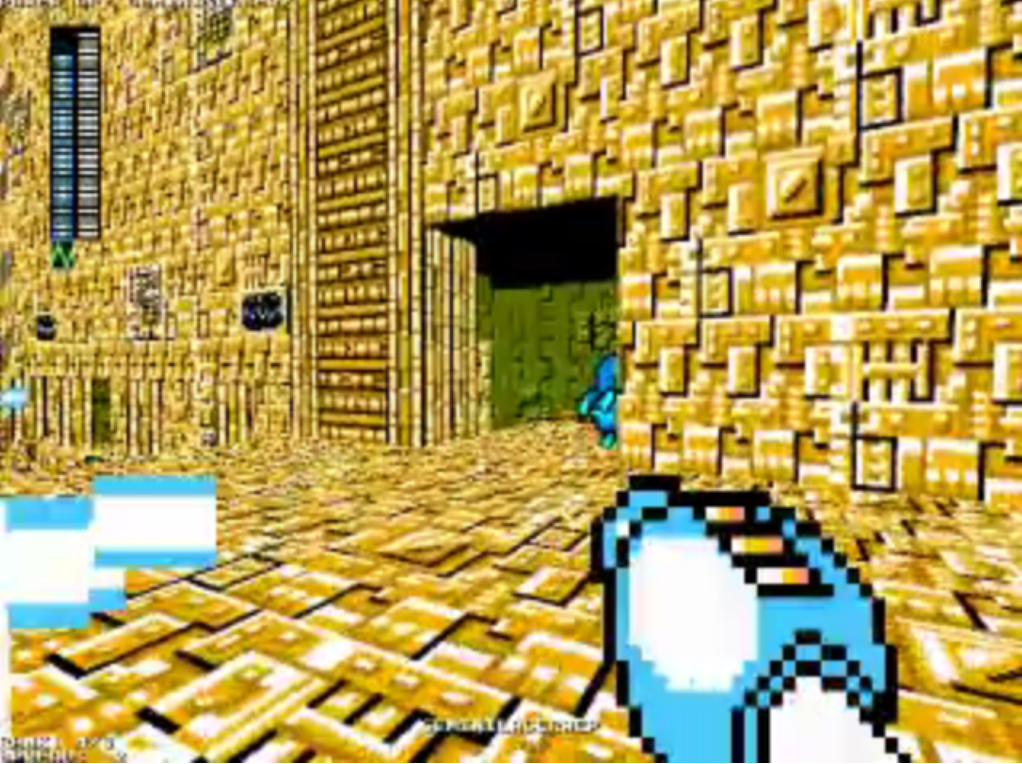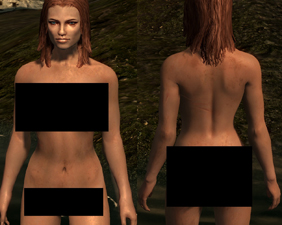
The protagonist from the Elder Scrolls V dressed up as Link from Legend of Zelda. |
Video game mods are user-made modifications of computer games. (Sotamaa, 1) Modders are people who make mods, modders must have knowledge of scripting languages, graphics programs, and software development kits.(Postigo, 302) Popular mods can significantly extend the life span of a game and particularly successful works of the modding community (such as Counterstrike or Team Fortress 2) can make the jump from mod all the way to a retail title.(Sotamaa) Mods can change different visual aspects of a game such as altering visual aesthetics, changing characters, changing up the interface, adding levels, adding clothes (or removing them if the player is so inclined), or even transforming the game into an entirely new world. (Soderman)
Some mods can actually be fan creations of a different sort adding characters or weapons from different series together, for example there are a few mods for the Elder Scrolls series of games, such as the one pictured to the left, that alter the player character in such a way to make it appear as though the player is playing as Link from the Legend of Zelda series. It’s these changes in visuals that can change the meaning of the game, you're no longer the Dragonborn: hero of Skyrim, but Link the Hero of Time and Savior of Hyrule.
Rom hacks are similar to mods in that while mods are applied to computer games rom hacks are applied to (usually older) console or portable games such as the Gameboy or NES. They’re called rom hacks because cartridge games store their data on rom files, thus altering the game requires hacking the rom file. Rom hacks can do most of the same things computer mods can do, though they often consist of new levels, stories, and visuals. Rom hacks are slightly rarer than mods for computer games due to the added difficulty in hacking a rom as opposed to a computer file, and that it’s more difficult to apply changes to rom file.
|


